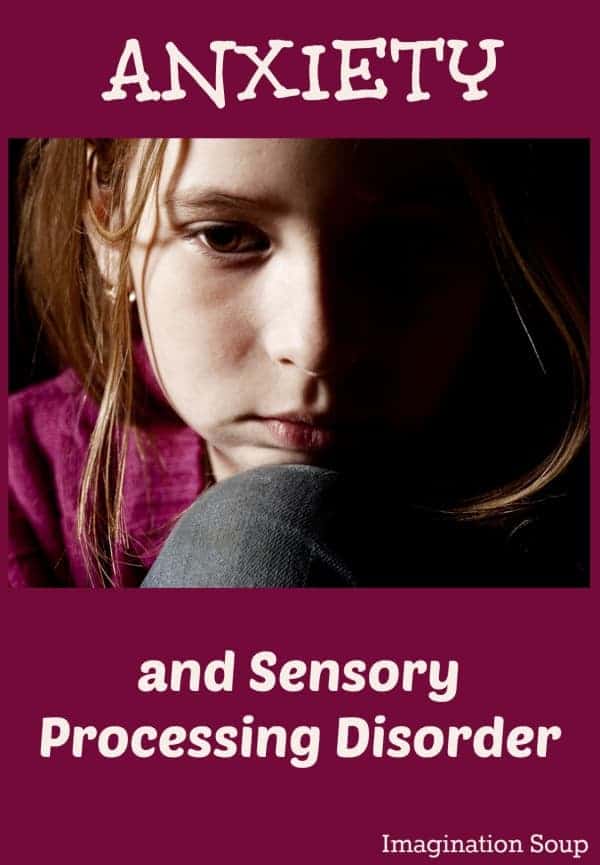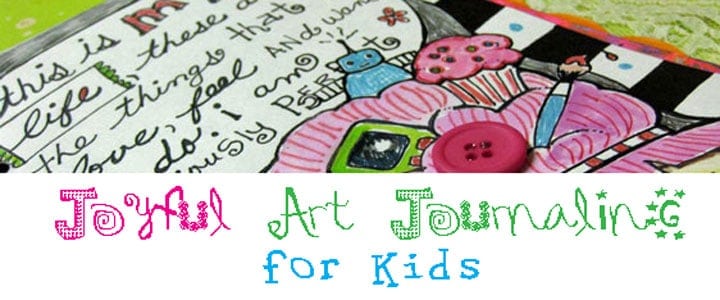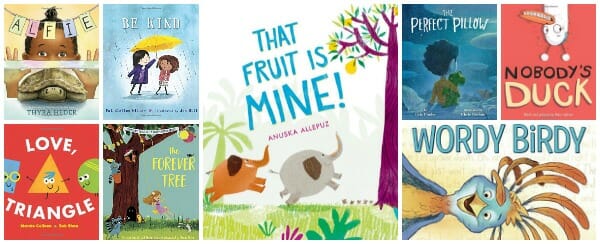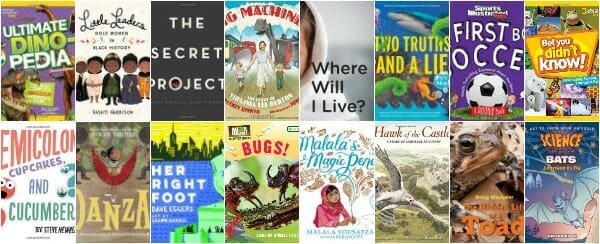Our Daughter’s Anxiety Connected to Sensory Processing Disorder
This post may contain affiliate links.
A few years ago we wondered if AJ had sensory processing disorder, SPD, and if it related to her anxiety.

Sensory Processing Disorder
At the time, her anxiety was so overwhelming, she had trouble leaving the house. She’d curl up in the fetal position and cry. A lot. (It sucked.)
Anxiety, if you ever have experienced it, doesn’t make sense.
After a miserable mountain vacation trapped in our condo, I realized that she needed more help than I could give. Professional help.
So, we went to a therapist. Well, two cognitive therapists. (In retrospect, I would recommend finding a good art or play therapist. That’s another blog post though.)
After seven months or so of weekly therapy sessions and little improvement, the last therapist suggested we get AJ evaluated at Children’s Hospital for SPD.
Fast forward to a diagnosis — SPD with tactile over-responsiveness. In other words, her tactile sensory system was over stimulated all the time. It explained everything – like why she hated to be held as a baby, why she flinched when we hugged her, or why the lining of her socks had to be smooth and thread free. Maybe, it explained the anxiety. We would soon find out.
Occupational Therapy at Children’s
We started occupational therapy at Children’s. Sabrina, the wonderfully kind OT, gave us weekly homework including a brushing technique and joint compressions.
Brushing and compressions worked miracles – which is bizarre because they seemed a bit like voodoo. But the proof was the result . . . after only a few months, she was a different kid.
The biggest immediate result? The anxiety disappeared. (And with it, the curled-up in a fetal position melt-downs.)
Another reward of the therapy? Hugs and the occasional cuddle. Soon, AJ wanted me to lay down with her while she fell asleep. We had some catching up to do! I got to make up for so many years where she didn’t want to be touched.
Update
We didn’t do the therapy forever – at home or at Children’s. For one, it was just too expensive. We stopped when we saw results after about 9 months.
Now, when we see that AJ’s over stimulated or seems “off,” we’ll start brushing again for a few days. Sometimes we give her a full-body, super tight-squeeze bear hug. It immediately calms her down. (I know, it seems weird for a touch-sensitive person but totally works!)
AJ is growing into herself every day, without the interference of her over-stimulated senses. She’s an amazing child with a lot to offer the world. If it weren’t for us discovering SPD, we wouldn’t be where we are today.
 Which is why I’m telling you this. Only very recently are doctors considering SPD a legitimate diagnosis. But whether or not it’s in the DSM or people think it’s a “fad,” it’s a very real condition. And something you get help for.
Which is why I’m telling you this. Only very recently are doctors considering SPD a legitimate diagnosis. But whether or not it’s in the DSM or people think it’s a “fad,” it’s a very real condition. And something you get help for.
Further Reading
Sensory Processing Disorder involves one or more of the senses and can be either over-responsive or under-responsive. The opposite of AJ is tactile under-responsive, also called a sensory seeker. These are kids who always are touching you, in your lap, petting others, hugging, seeking to be touched. I know of kids whose affected senses are hearing and vision.
SPD Foundation’s website
“Is it Sensory Processing or ADHD?”, ADDitude Magazine
SPD Blogger Network
I hope this helps you – or someone you know.
Do you have any questions for me? Experiences with this?
UPDATE: How Developing the Brain Helped with Sensory Processing, Anxiety & Food Pickiness For Our Kids
My first post about SPD . . .








My son, who is 2yo, was diagnosed with SPD this year. He is hypersensitive to touch, noises, and smells. He is hyposensitive to proprioceptive, vestibular, and oral. He gets very anxious when others talk to him or touch him. We work with OT once a week and have attempted using the brushing technique and the joint pressure as well. Unfortunately neither of these have helped him. Occasionally he allows us to do the joint pressure, the brushing technique causes a complete meltdown. Whenever someone touches (especially some who wears perfume and is aggressive) him he has several bad days. He will not wear clothes, has night terrors, sleep talks, nightmares, wakes up several times in the night. This can last a couple of weeks. Trying to explain SPD to family and others has been extremely difficult. Many have been skeptical of the diagnosis. Our Occupational Therapist has been great and has been willing to change appointment times to help with education, but we have yet to get those involved to be open to this. We just want our son to have to best life possible. We know it takes everyone involved to be supportive of him.
It sounds like it’s been so tough for him and you!! I wish I could just give you a big hug and tell you it will be okay.
It’s really hard. I get it. You’re doing everything you can do. Keep on going!! And try to ignore those people who don’t understand. There are people like me who do understand. Find us so you can get the compassion and support you need to do this really hard job.
Our daughter fought us (kicking, flailing) on the brushing and joint compressions — but we still did it 3 x a day and after about 3 weeks (I think it was), we noticed a shift. I think we also bribed her quite a bit because we hoped that if we could just get over the hump, she would feel better in her skin. I don’t know if it helps to hear but maybe it’s like this for many of our kids.
We also just recently tried Brain Highways (https://imaginationsoup.net/2016/09/02/anxiety-sensory-pickiness-changed-kids/) which really helped my other daughter. It might be worth looking into.
Hang in there!! You are doing this and you’re amazing!!
Brain Highways sounds like something worth checking into, thanks Melissa!
It’s hard to find tools that can help as the kids become teens and young adults.
I just wrote about it here: https://imaginationsoup.net/2016/09/02/anxiety-sensory-pickiness-changed-kids/
I just want to let parents of kids with sensory issues also consider the possibility of Non Verbal Learning Disorder. It is probably even less understood and recognized than SPD. But the early sensory issues are the first sign, SPD is also a part of NVLD. The name alone is confusing, it sounds like it’s a label for a child who doesn’t talk. My husband found a description of it 14 years ago when our child was being diagnosed with SPD and commented that it sounded like our daughter. But I looked at the title and said ” no way, she is VERY verbal!” If you also notice struggles with math after the 3rd grade, anxiety, depression, continued social problems it may be time for another evaluation.
And also, hearing from other parents of young children, I am a bit troubled that SPD still isn’t well recognized in schools. It’s been 14 years since our daughters diagnosis, and I thought we would have made more progress by now. As parents I know we have. But educators maybe should be required to have more training in the signs of Learning Differences. People are not cookie cutters of each other. Schools need to start recognizing that.
I agree! Thanks for the info. 🙂
My daughter is 20 years old and was diagnosed at age 6 with Sensory Integration Dysfunction, now called SPD. Back 14 years ago nobody had heard of the disorder. She was miserable in school, where her sensitivities and anxiety were triggered horribly, but was actually only mildly affected at home. She was bullied and excluded for her odd behavior and melt downs. Teachers did not understand this disorder and had never heard of it. By middle school, she was an anxious and depressed wreck with school being the main source of her discomfort. She always did very well academically, won several writing awards, but she started seriously struggling in math. We had her tested again, and we got a new diagnosis of Non Verbal Learning Disability or NVLD. It is a right brain deficit. This explains the social problems, poor coordination, math issues. Sensory issues also present frequently with NVLD. And it is just about as unknown and misunderstood as SPD.
At 20 years old my daughter is on 2 medications to help the depression and anxiety. Although very intelligent, she has a strong aversion to school due to years of torment and tried community college but did not like it. She also has anxiety about driving, so gave it up shortly after getting her license. We are now working on helping her find her niche in life, and to deal with the chronic anxiety. She does have a boyfriend she met through her hobby of cosplay. It is a long distance relationship as he lives out of state but they meet up every few months and skype daily and play online games together. She is into costuming and is very creative but also very disorganized and anxious about getting a job and living as an adult.
I haven’t written about this yet but we’ve found some hope in a program called Brain Highways — we creep (yes, belly creeping) and do the primal reflexes that will develop our lower brain. We’ve been doing it with our kids for only 3 weeks so I don’t have enough information personally on the results. However, I’ve talked to many people and read testimonials that it’s amazingly helpful for improving processing speed, SPD, anxiety, etc. because the cortex isn’t overloaded when the lower brain is properly developed. They have online programs and might be worth looking into.
It’s helpful for adults, too!
Melissa
Hello Melissa,
can you please tell us more about the Brain Highways? Are you still doing it, hes it helped your daughter? Thank you
https://brainhighways.com/ is the website. They have onsite classes in Denver and San Diego as well as online classes anywhere.
Yes, we are still doing it — the kids (and us, too) have transitioned from only creeping 30 minutes a day to also crawling for 45 minutes of total floor time. (As well as other vestibular and proprioceptive activities.)
Yes, it has helped!! It’s a heck of a lot of work for us as parents to facilitate, learn everything from their provided materials, and to do it ourselves . . . but it’s helped. I notice improvements with: body awareness (personal space), hand-eye coordination, eye tracking, attitude, overwhelm. multi-step directions, many sensory things, handwriting . . .
I also know it has been helping my husband and I with our parenting!
Oh that’s fantastic news! So your daughter no longer has a sensorry processing disorder? Is that what is expected from the BH program?
I don’t think they would say that for sure but we are seeing big improvements with her behaviors — and we’re still doing the floor time and she’s behind since she’s having wrist issues. Maybe in a few months I will more accurately be able to say it’s gone. I don’t know but I hope so! 🙂
here’s more info: https://imaginationsoup.net/2016/09/02/anxiety-sensory-pickiness-changed-kids/
With the brushing and joint compressions, did you do it every 90 minutes to notice a change? Thank you! We’re in over our heads in the world of tactile defensiveness mixed with anxiety.
Kari
I can empathize, it’s so overwhelming. It helped me to just go slow and do what I could every day. You don’t have to do it all at once or know it all at once.
We did the brushing 3 x a day — before school, after school, and bedtime. I think we were supposed to do it more frequently but that was all we could do with the school schedule and her resistance to it. We noticed a change within a few weeks I think. (It’s been a few years now so I’m forgetting some of the exact details.) Keep going — you’ll be glad you did!!